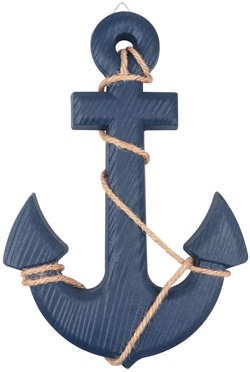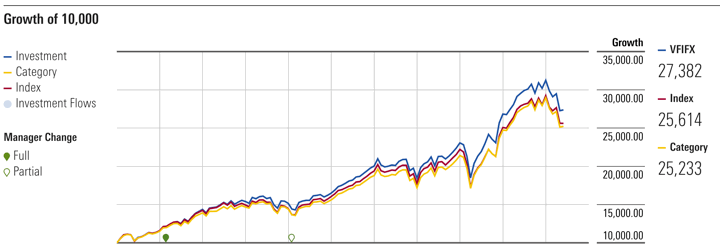 Inside various financial forums, I am seeing the “anyone else worried?” 😓 posts as most portfolios are down double-digits. For a retiree with a $1 million portfolio, seeing $100,000 or $200,000 of value evaporate is understandably stressful. However, much of this is because you are comparing to your portfolio’s all-time high, or high-water mark, which is a relatively arbitrary number. Just because at one moment in time, there were a few willing buyers of your assets for a given price doesn’t mean you should anchor yourself to that number.
Inside various financial forums, I am seeing the “anyone else worried?” 😓 posts as most portfolios are down double-digits. For a retiree with a $1 million portfolio, seeing $100,000 or $200,000 of value evaporate is understandably stressful. However, much of this is because you are comparing to your portfolio’s all-time high, or high-water mark, which is a relatively arbitrary number. Just because at one moment in time, there were a few willing buyers of your assets for a given price doesn’t mean you should anchor yourself to that number.
Step back and have some perspective. I would offer up this historical performance chart of the Vanguard Target Retirement 2050 Fund (VFIFX) as evidence that things really aren’t that bad if you take a step back. This chart tracks the growth of a $10,000 investment place in 2012 in this all-in-one Target Date Fund. Taken 5/30/22.

- As of 5/30/22, the 10-year trailing return for VFIFX is 10.28% annualized even after the recent drop. Can you reasonably ask for more than 10% average annual returns for a decade?
- If you invested in January 2020, right before the COVID pandemic started, you are still up 18.7% if you held through today.
- If you invested funds anytime between January and August 2020, those funds are up even more than that!
- The last time your investment value was this low was… March 2021. That’s it.
Things might get much worse, things might get better and never look back, I don’t know the future. This is another reason why I no longer check my portfolio balance on a daily basis. How can I say that, when his whole blog was once based on the idea that I would share my net worth every month?! Back then my savings rate was much more significant than my portfolio performance. Side hustle money made a big difference and I felt in control. These days, the opposite is true. The portfolio movement overwhelms our savings contributions.
Track something better. If you keep staring at that portfolio balance, you’ll get overly excited when you hit an arbitrary number like $50,000 and then get really depressed if it drops below and stays there for a while. You need to track something better. If you are still in the accumulation phase, your metric for success could be:
- Your 401(k) contribution rate. A reasonable target might be 15% or higher.
- Your overall savings rate. Heck, if you are tracking this number at all, you are probably way ahead of the game.
- Your side hustle monthly total. If your day job has a fixed salary, you might focus on the side income instead.
- Your portfolio’s 2-year trailing average or similar. Anything that has a longer time horizon and offers more perspective.
If you are in the spending phase, you could track something like your spending rate as a percentage of portfolio, and if that’s still reasonable then go back to enjoying your life. You may also explore a dynamic spending strategy.
Bottom line. Your quoted portfolio value in November or December 2021 doesn’t matter. If you tell yourself stuff like “I’ve lost $XX,000” since December 2021, you are experiencing the anchoring cognitive bias.
 The Best Credit Card Bonus Offers – 2025
The Best Credit Card Bonus Offers – 2025 Big List of Free Stocks from Brokerage Apps
Big List of Free Stocks from Brokerage Apps Best Interest Rates on Cash - 2025
Best Interest Rates on Cash - 2025 Free Credit Scores x 3 + Free Credit Monitoring
Free Credit Scores x 3 + Free Credit Monitoring Best No Fee 0% APR Balance Transfer Offers
Best No Fee 0% APR Balance Transfer Offers Little-Known Cellular Data Plans That Can Save Big Money
Little-Known Cellular Data Plans That Can Save Big Money How To Haggle Your Cable or Direct TV Bill
How To Haggle Your Cable or Direct TV Bill Big List of Free Consumer Data Reports (Credit, Rent, Work)
Big List of Free Consumer Data Reports (Credit, Rent, Work)
haha yeah – a lot easier to feel good when your savings numbers are higher and you can see the affects on your net worth than when the worth is mainly carried by market whims over time 🙂 I mean, GOOD problem to have cuz it means you have tons of $$$ invested!, but much harder to *feel* good if it keeps trending down even though you’re a baller w/ your cash flow…. Maybe you should just print out that and put it on your desktop and phone “You’re a baller with your cash flow” lol…
Lol! Good advice. Most people remember the high point but forget the lows when it comes to stock markets.
Your point on anchoring is definitely true.
However, I wonder if people are more worried about the potential prospect for big additional losses and/or the market taking a long time to recover. Those 10+% historical returns on a balanced portfolio were largely a function of the drop in interest rates down to zero and policymakers stepping in every time things got hairy. If inflation has reversed that trend on discount rates and taken away the Fed’s flexibility to rescue risk assets, it could challenge all of the assumptions we’ve built about the resiliency of markets which were formed in an environment of continuously downward-trending interest rates over the last 40 years.
You make such a good point. We’ve had unusually good returns in the stock market because the Fed stepped in to aggressively support it since the last financial crisis. Near-zero interest rates are not normal. Near-zero rates in a recovering-to-good economy (like we had through most of the 2010s) are even less normal. With inflation raging now, the Fed is (finally) getting serious about getting it under control by raising rates. How long will the Fed have to fight inflation? 1 year? 2 years? 10 years? How long and how high rates go will likely have an impact on stock market performance. It could take many, many years to recover the losses from this current bear market. This is why I’m not a big fan of buy and hold. It can take a long time to recover your losses and there’s only so much time until retirement.
Hi Jonathan,
I really like your list of alternative metrics, especially those that focus on your circle of control. Though I also like the smoothing aspects of considering only the sliding average values. And the dynamic spending strategy is fantastic as well, as it gives you more control over your long term finances.
I can very much relate to the lack of control when daily market swings dwarf your savings each month. But to offer a different perspective, I actually find that checking our portfolio balance daily makes me less stressed about the ups and downs of the market. “Oh it’s another multi-thousand dollar swing in our portfolio, just like yesterday, no big deal, what’s for dinner?” Vs “Whoa, our portfolio went down *that much* last month? I need to spend all night researching what’s happening in the markets! Gah!”
One benefit I find of anchoring on the high water mark is that I ask myself “If the market returned to prior levels, would my portfolio be ahead or behind that value?”. This reminds me not to sell into loses (so I can at least match a return to those highs) and to buy or make sure dividends are reinvesting (which means I could be ahead or hit it earlier)….